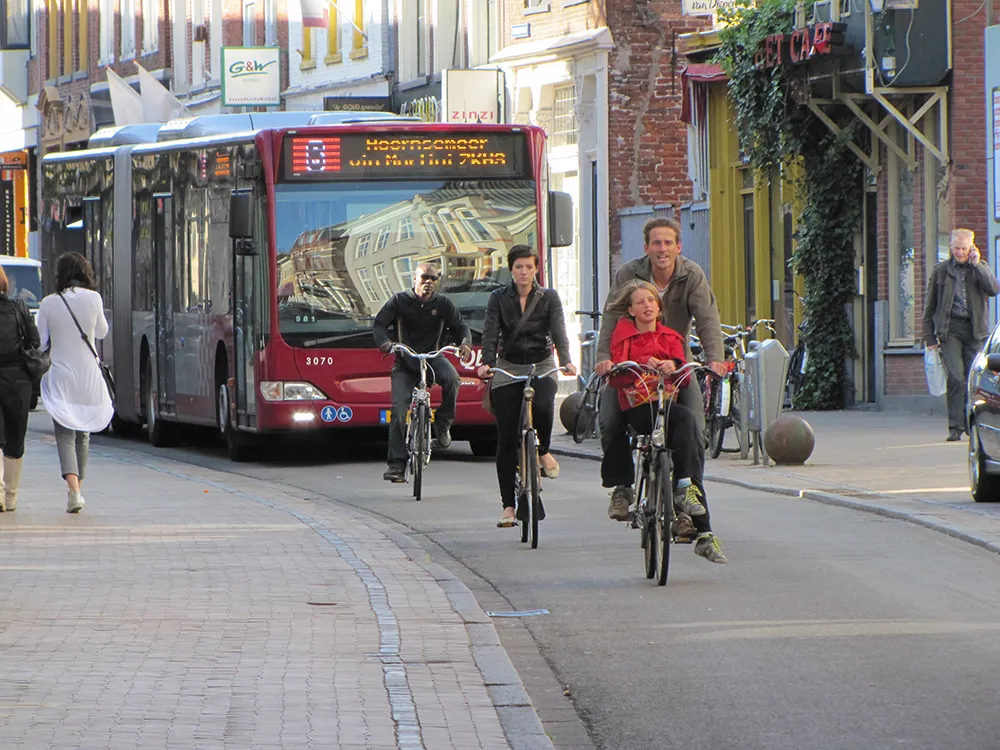According to new research from the analyst firm Berg Insight, the market value for public transport intelligent transport systems (ITS) in Europe was US$1.3 billion in 2012. Growing at a compound annual growth rate of nine per cent, the market is expected to reach US$1.9 billion by 2017.
Berg Insight suggests that the European market for ITS for public transport is in a growth phase which will continue throughout the forecasted period. The fluctuating economic climate has in most countries had little eff
November 18, 2013
Read time: 2 mins
According to new research from the analyst firm 3849 Berg Insight, the market value for public transport intelligent transport systems (ITS) in Europe was US$1.3 billion in 2012. Growing at a compound annual growth rate of nine per cent, the market is expected to reach US$1.9 billion by 2017.
Berg Insight suggests that the European market for ITS for public transport is in a growth phase which will continue throughout the forecasted period. The fluctuating economic climate has in most countries had little effect on the market as the public investments which underpin a major part of the ITS initiatives have remained stable throughout the periods of crisis. The local markets in southern Europe which have been affected to a greater extent by decreasing investments are expected to recuperate in the near term.
“The European market for public transport ITS is expected to develop favourably in the upcoming years, spurred by developments on both national and EU level”, said Rickard Andersson, senior analyst, Berg Insight. Public investments in ITS are set to grow in many regions at the same time as international initiatives such as the EBSF EU project and UITP’s sought-after doubling of the public transport ridership are anticipated to boost industry activity. “The global trend of smart city initiatives is furthermore a major driver as intelligent transport systems in general and public transport ITS in particular are key elements to enable sustainable smart mobility”.
Andersson adds that open sharing of public transport data is a prerequisite to enable seamless multimodal, multi-operator and cross-border journey planning tools which travellers increasingly come to expect. “Third-party developers are in the future expected to contribute greatly to new innovative services for passengers by leveraging the data sets generated by public transport ITS”, concluded Andersson.
Berg Insight suggests that the European market for ITS for public transport is in a growth phase which will continue throughout the forecasted period. The fluctuating economic climate has in most countries had little effect on the market as the public investments which underpin a major part of the ITS initiatives have remained stable throughout the periods of crisis. The local markets in southern Europe which have been affected to a greater extent by decreasing investments are expected to recuperate in the near term.
“The European market for public transport ITS is expected to develop favourably in the upcoming years, spurred by developments on both national and EU level”, said Rickard Andersson, senior analyst, Berg Insight. Public investments in ITS are set to grow in many regions at the same time as international initiatives such as the EBSF EU project and UITP’s sought-after doubling of the public transport ridership are anticipated to boost industry activity. “The global trend of smart city initiatives is furthermore a major driver as intelligent transport systems in general and public transport ITS in particular are key elements to enable sustainable smart mobility”.
Andersson adds that open sharing of public transport data is a prerequisite to enable seamless multimodal, multi-operator and cross-border journey planning tools which travellers increasingly come to expect. “Third-party developers are in the future expected to contribute greatly to new innovative services for passengers by leveraging the data sets generated by public transport ITS”, concluded Andersson.








